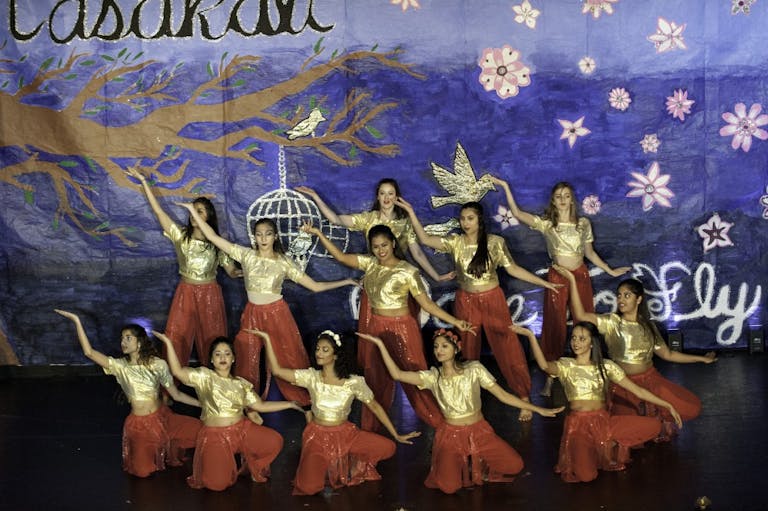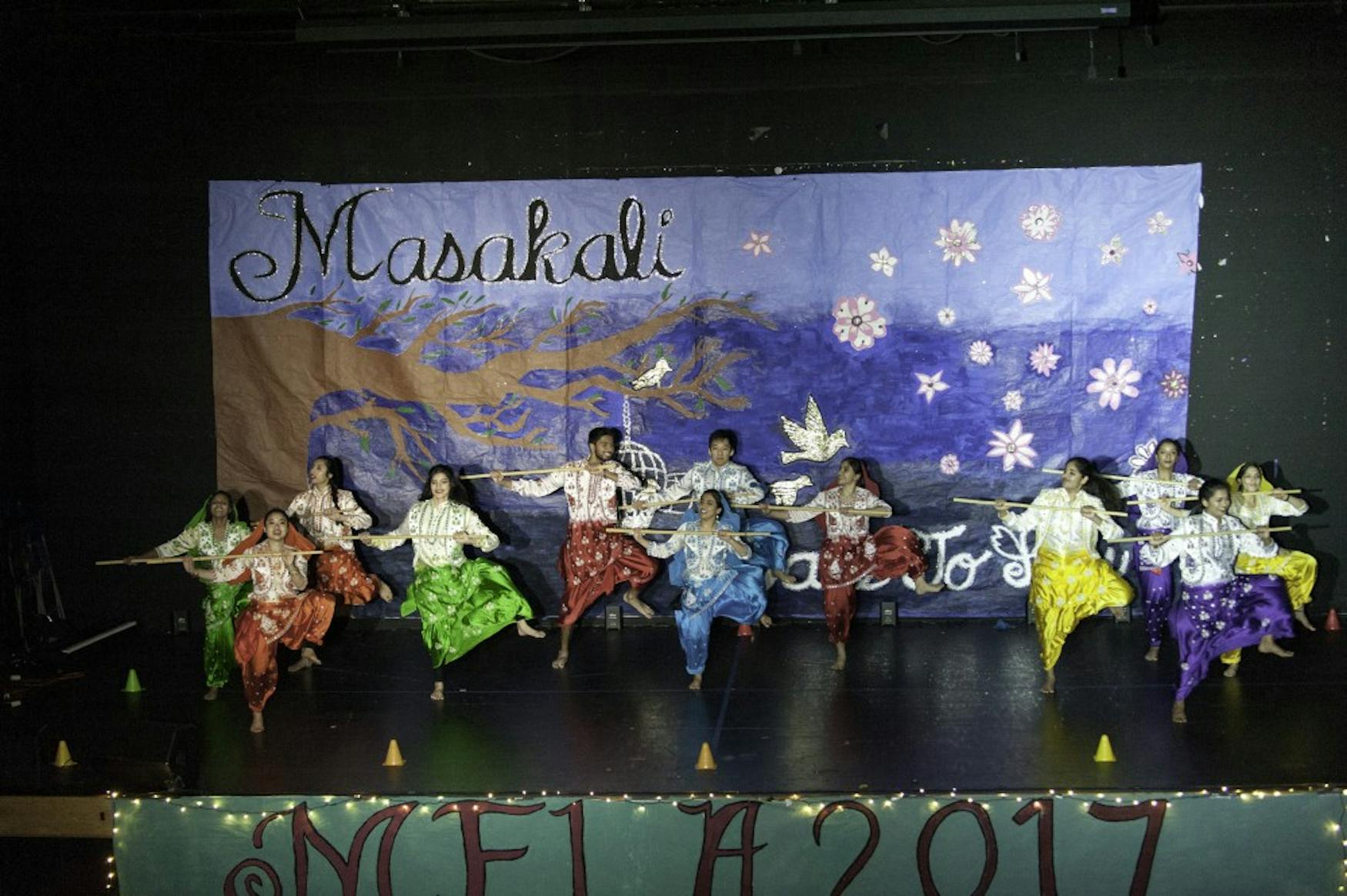MELA highlights beauty of South Asian culture
On Saturday night, the South Asian Students Association (SASA) hosted MELA, its annual culture and charity show, in Levin Ballroom. The curtains opened to reveal a beautiful, sparkling backdrop which revealed the theme of the night: “Masakali: Dare to Fly.” Masakali is a Hindi word that means to soar and fly without limitations. This overarching theme successfully encompassed the show; the performers dared to fly and they soared.
The show was hosted by three individuals: Taminder Singh ’20, Farzana Afreen ’19 and Rebecca Cohen ’19.
The three joked about competing with one another to be the best emcee, and staged a cookie competition in which the participants tried to keep a cookie on their faces for as long as possible. The emcees were entertaining, but their dialogue often got repetitive and dragged on too much.
Though MELA is a culture show, it is also a charity event; some of the ticket proceeds go to the club’s chosen organization of the year. This year, the charity of choice was the Pro Bono Counseling Center, which gives pro bono mental health counseling to those in need.
The proceeds will be going to the center’s Chai program, which helps the South Asian community. SASA Co-President Mrudula Gadgil ’18 completed a Sorensen Fellowship at the Center and stated that the purpose of the Chai program is to reduce the stigma surrounding mental health in South Asian culture.
One highlight of the performance was a singing act with Radhika Jangi ’18 on vocals and SASA Co-President Vineet Vishwanath ’18 on guitar. The duo performed the songs “Kehna Hi Kya” and “Jiya Jale,” which are from the Bollywood movies “Bombay” and “Dil Se,” respectively. Jangi’s voice was beautiful and Vishwanath’s subtle guitar plucking enhanced the performance.
The Bollywood fusion dance team Chak De’s act was also impressive. The dance followed the narrative of a princess who refused to accept her royal duties because she wants to party. The queen becomes angry at the princess’ defiance, but when the kingdom is attacked, the princess saves it.

CHAK DE: The dancers perform a narrative dance about a princess reluctant to accept her royal responsiblity.
The queen hands the princess a crown, but the princess tosses it away, while saying that only a queen can wear a crown. As the narrative went on, the mood of the music changed. During the party scene, happier music played, whereas during the attack of the kingdom, the music was more heated. The team was in sync, and their emotive dancing effectively illustrated the narrative and made the audience feel closer to the performers.
The SASA fashion show showcased traditional South Asian clothing. The models strutted around Levin Ballroom with confidence and smiling faces, showcasing their stunning outfits.
SASA members of each class year did their own dances, each one better than the last, which was probably due to the increasing dance experience possessed by the upperclassmen.
The junior dance was marred by a technical difficulty, but the dancers handled it well and recovered quickly.
In the middle of the event, the SASA e-board gave speeches. Vishwanath stated that he “never thought [he’d] find [his] second family so quickly…[and] an opportunity to discover [himself] and [his] culture.”
Other members thanked the presidents and added that they were grateful for the opportunity to be on e-board.
Brandeis Bhangra, another fusion dance team, was a notable act as well. Bhangra, according to the program, “serves up a mix of western hip-hop beats and eastern dhol rhythms.” The dancers moved their prop poles gracefully as they danced around the stage. Their routine was not only well-done and coordinated, but also lively and probably my favorite act of the night.
In a speech during MELA, Singh said that the theme of Masakali made MELA “a night to love and be free without limitations.” The combination of charity and performance made MELA a night of seemingly limitless love and passion for helping the South Asian community as well as beautifully exhibiting South Asian art and culture.




Please note All comments are eligible for publication in The Justice.